Explore our East Region
The East region includes cemeteries and war memorials in Norfolk, Cambridgeshire, Suffolk, Bedfordshire, Hertfordshire and Essex.
In this region the CWGC commemorates more than 16,000 service personnel at over 1,500 locations.
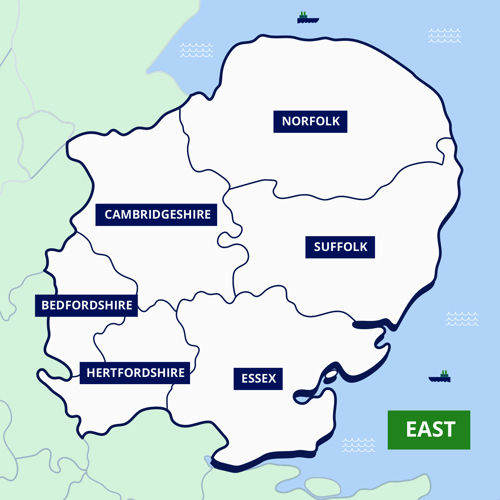
Meet the Team

Hi, I’m Elizabeth and I am the Public Engagement Coordinator for the North of England. I joined the Commission in March 2018 and since then have been working hard to promote the hundreds of cemeteries and memorials in the North East and North West regions to the public.
One of my biggest achievements has been researching and writing a tour of the war graves at Stonefall Cemetery in Harrogate, where over 1,000 servicemen and women of both world wars are buried. Last year I hosted more than 500 local primary school pupils at the site and gave tours to the general public.
I feel a connection with all those casualties I research and for some of those buried at Stonefall I have been fortunate to be in contact with their families too. There is nothing that makes me prouder than knowing that I am helping to keep the stories of our casualties alive.
Join the conversation on Facebook
To get in touch with your regional public engagement coordinator, please email public.engagement@cwgc.org

Hi, I’m Chris and I am the Regional manager for the Commissions work across the East of England. In total my team work at nearly 2,500 locations, caring for almost 25,000 grave markers across the East and East Central Regions. Many of our sites across the East of England have strong connections to the RAF due to the large number of air bases in the area during the Second World War and it’s not uncommon today to see the Red Arrows training overhead while at work in Lincolnshire.
I joined CWGC as a stonemason in 1991 and have never looked back. I was originally based in the UK but within a few years I had the amazing opportunity to work all over the world, including at sites in Italy, Malta and Tunisia before joining the spiritual heartland of the Commission in western Europe.
There have been many memorable occasions that remind me how honoured I am to work for the Commission. These include the recovery of the remains of a Spitfire pilot in Italy, now buried in Ravenna Cemetery. We were shown where his aircraft had crashed by an older Italian gentleman who remembered seeing the crash when he was a child. If you are ever in North East Italy do drop in on Ravenna Cemetery and visit the grave of Flight Lieutenant Douglas Leitch of 72 Squadron, who died in March 1945, aged 27.
But there have been some very emotional and moving occasions right here in the East region. One that stands out now was during a visit to Scottow Cemetery, in Norfolk. It’s a small plot set down a small country road in an incredibly peaceful rural spot. I met an older gentleman there who had travelled all the way from Australia to visit the grave of his father for the first time. It made all the years of caring for that grave very meaningful and I still pause at the grave every time I visit Scottow Cemetery and remember.
We look after lots of different sites across the East Region. Cambridge City Cemetery is the final resting place of more than 1,000 servicemen and women, while the Lowestoft Memorial commemorates 2,400 service personnel of the Royal Naval Patrol Service, but we also tend graves in isolated locations and most of the sites we work at have only one or two war graves. Big or small, they are all important.
To get in touch with the regional operations team, please:
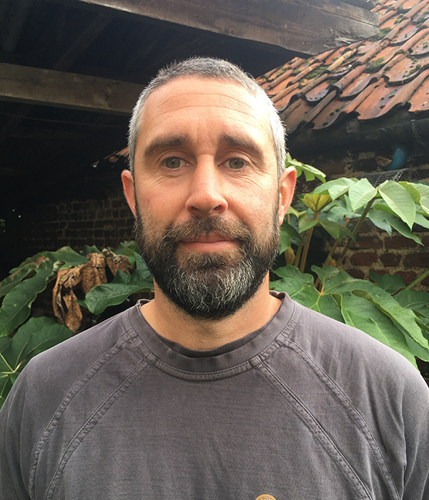
Hi, I’m Richard and I’m the Regional Operations Coordinator for the Commissions work across the East of England. My job is to plan the work relating to the upkeep of our war graves across the East and East Central Regions, including horticultural renovations and maintenance, as well as headstone cleaning, replumbing and replacements.
It might sound strange but one of the biggest challenges we face in the East Region is the lack of rainfall. East Anglia is said to be the driest region in the country – with Norfolk listed as the driest county – and we are now developing planting schemes and turf seed that can better cope with the drought conditions we are more commonly experiencing. If you visit our sites across the East region don’t be surprised to see succulent-type plants and Mediterranean species.
I have some great memories of working for the Commission across the East of England. It might sound strange but one of the best parts of my role is seeing renovation work on cemeteries completed. These tasks are not only enjoyable to work on but are also greatly appreciated by members of the public and families of the fallen, many of whom regularly visit our sites and several who are visiting for the first time. It can be quite humbling to hear stories from family members about their loved one's wartime endeavours.
It is the satisfaction gained from being able to maintain the high standards that the fallen and the families of the fallen deserve, combined with the knowledge that our work is greatly admired throughout the world that I love most about the job.
To get in touch with the regional operations team, please:

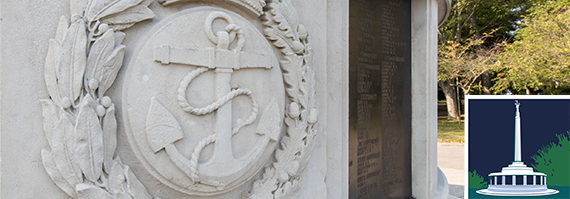
Lowestoft was the base of the Royal Naval Patrol Service (RNPS) and this memorial commemorates 2,400 sailors who of the RNPS who have no grave but the sea.
Lowestoft Naval Memorial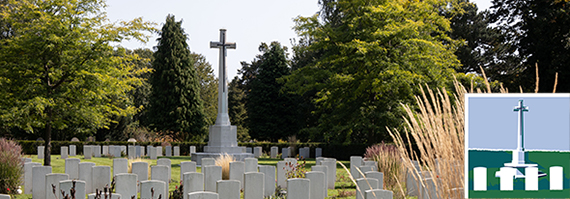
This is the final resting place of over 500 First and Second World War service personnel who died in nearby military hospitals or served at the airbases that were established across Cambridgeshire.
Norwich Cemetery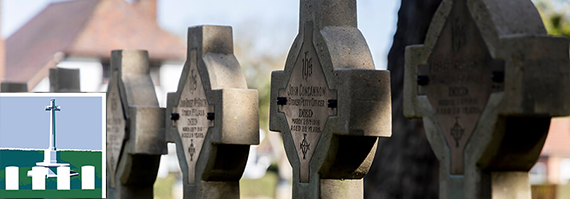
During the First World War, Harwich Harbour was a naval hub on the east coast. Today Walton-on-the-Naze (All Saints) Churchyard Extension contains 21 Commonwealth burials of the First World War.
Walton-on-the-Naze (All Saints) Churchyard Extension
Situated within the grounds of Hatfield House, Hatfield Park War Cemetery contains 20 graves from the Second World War, including the grave of a civilian airman who died in 1943.
Hatfield Park War Cemetery
